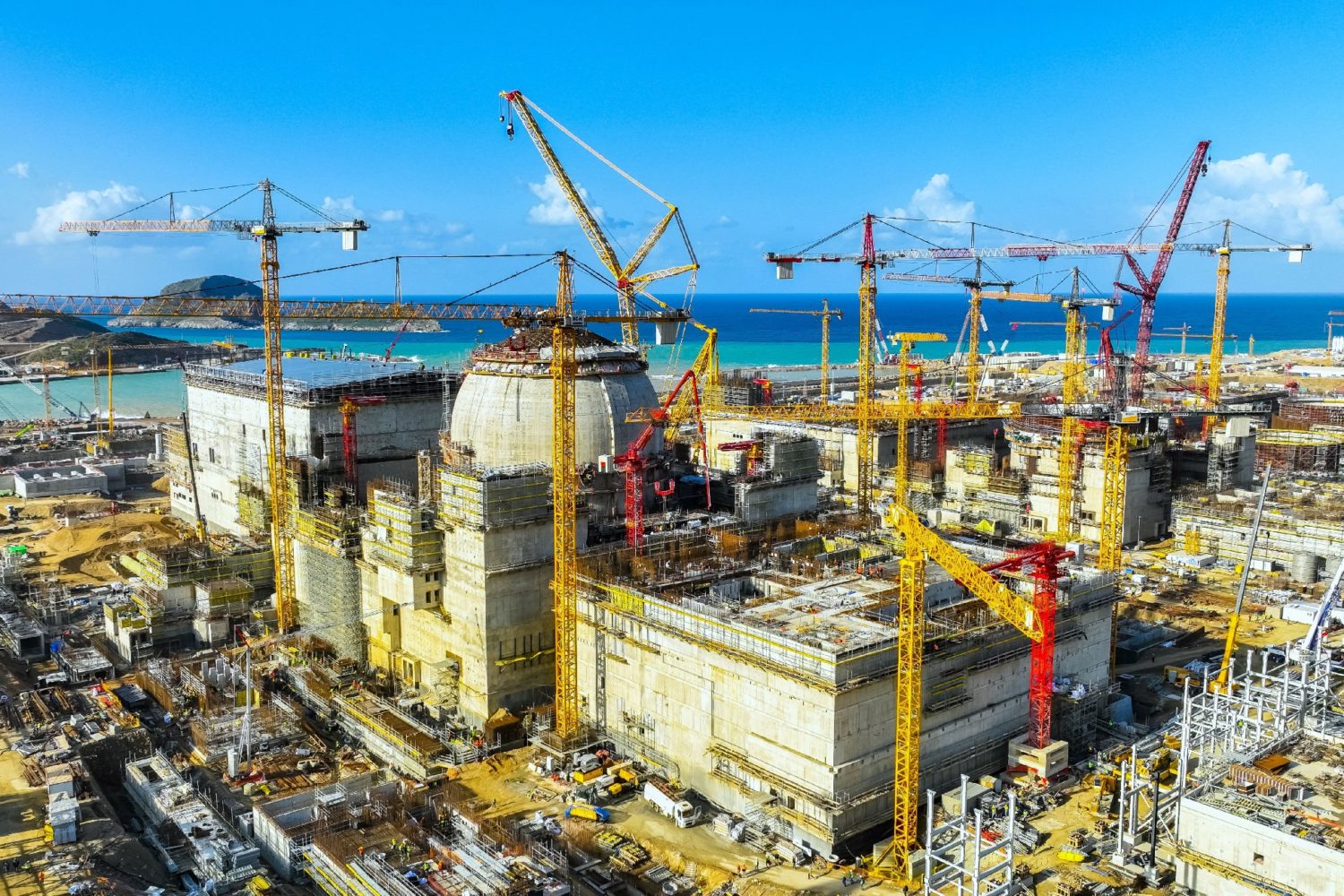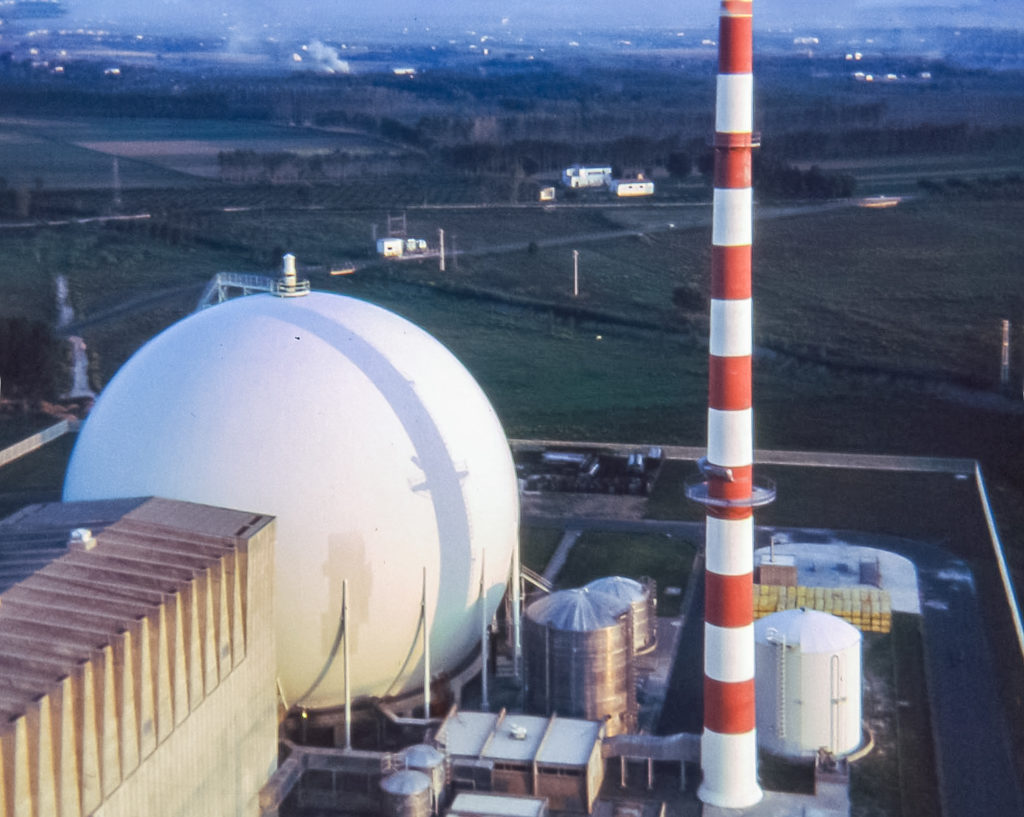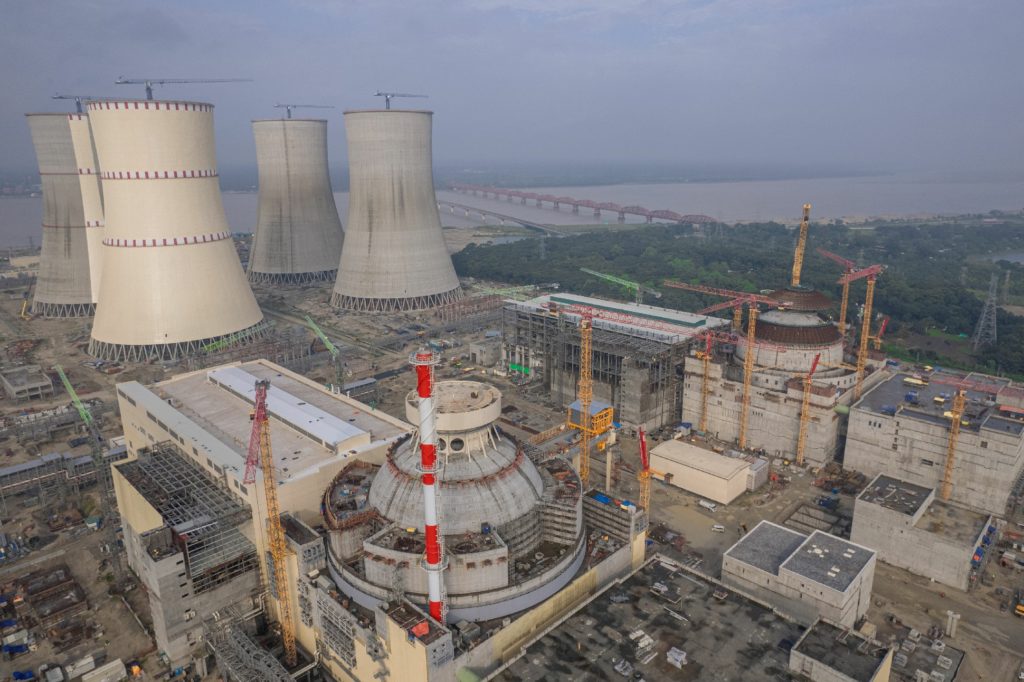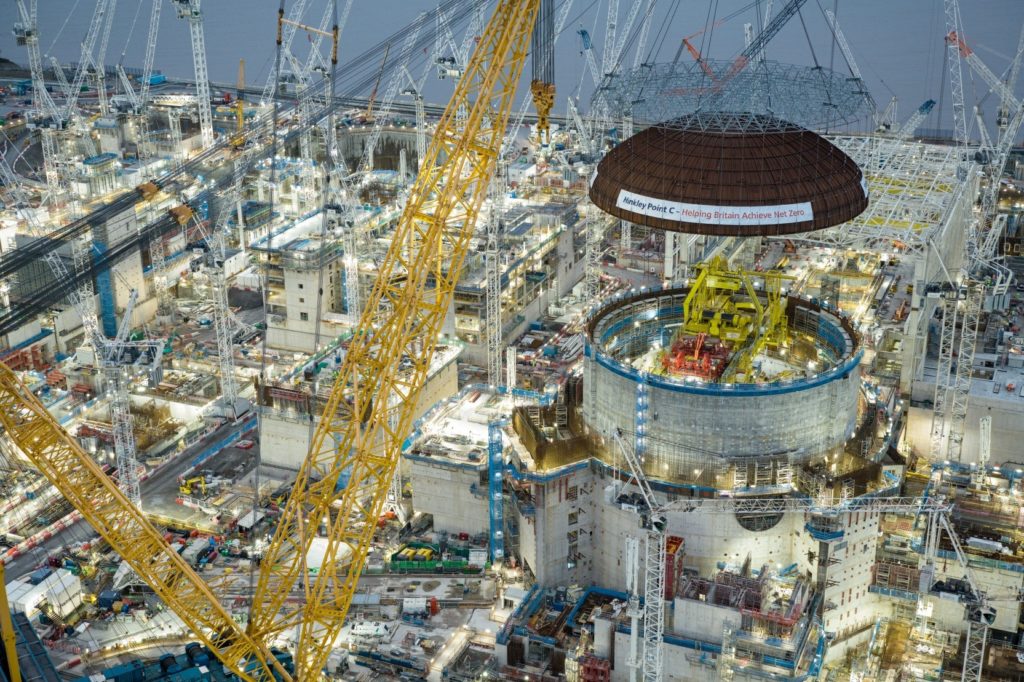
Nuclear Needs Finance
back to contentsAs was stated at this year’s UN Conference of the Parties (COP28), nuclear energy is underfunded. As a consequence, its potential to generate clean and safe electricity, the need for which is growing year by year, has not been realized. The sector needs long-term, inexpensive and reliable finance to make nuclear generation affordable.
Tripling twice
Two statements on the tripling of nuclear generation were signed at COP28. The first one was signed by top-rank officials from 22 countries. The threefold increase is needed to achieve zero greenhouse gas emissions, or carbon neutrality, worldwide by around mid-century and limit the temperature rise to 1.5 °C.
The signatories committed, among other things, to work together to advance a global aspirational goal of tripling nuclear energy capacity from 2020 by 2050, recognizing the different domestic circumstances of each participant, and to take domestic actions to ensure nuclear power plants are operated responsibly and in line with the highest standards of safety, sustainability, and non-proliferation, and that fuel waste is responsibly managed for the long term. The signatories also intend to mobilize investment in nuclear power, including through innovative financing mechanisms, inviting the World Bank and shareholders of other international financial institutions to encourage the inclusion of nuclear power in their organizations’ energy lending policies.
The second statement on tripling nuclear capacity by 2050, the Net Zero Nuclear Industry Pledge, was signed by over 120 companies operating in 140 countries, with Rosatom among them.
The signatories to the Net Zero Nuclear Industry Pledge recognize that “by ensuring nuclear has access to climate finance equal to other clean energy sources, governments can enable nuclear capacity deployment at scale worldwide.” They also “ask governments, the World Bank and multilateral development banks to ensure nuclear energy has access to climate finance equal to other clean energy sources.” With this financial support, the nuclear industry will increase its contribution to climate change mitigation by deploying more capacity around the world.

“It is now time to move forward: let’s translate ambition into pragmatic policies, good intentions into affordable financing, and deadlines into on-time on-budget delivery of new nuclear energy projects,” said World Nuclear Association Director General Sama Bilbao y León on the occasion of signing the Net Zero Nuclear Industry Pledge.
“We recognize the urgent need to address climate change, and nuclear power is a proven, fast and sustainable solution to decarbonization challenges. By joining the nuclear companies’ pledge, we reaffirm our commitment to working with national governments and stakeholders to triple nuclear capacity by 2050,” said Kirill Komarov, First Deputy Director General for Corporate Development and International Business at Rosatom.
The reference to the World Bank in the both commitments is not accidental. Who else but this international financial institution should finance projects that contribute to solving such global problems as climate change?
Moreover, the World Bank has once financed the construction of a nuclear power plant. “It is a little known fact that the World Bank financed a nuclear power plant. On September 16, 1959, the Bank made a loan equivalent to USD 40 million for the construction of a 150,000 kilowatt atomic power plant in Italy (Loan 0235). This was Italy’s first nuclear power plant, and the Bank’s loan financed almost two-thirds of the cost of construction. The project also included civil works, a substation and about 60 miles of transmission lines.” Of course, the initial “It is a little known fact” may provoke a sad smile at best because, since the loan was made, more than sixty years have passed, two major energy crises have broken out and blown over, confirming the importance of nuclear power for the global economy, and even the World Bank’s Loan for Nuclear Power brochure, from which the above quote was taken, has gone through two editions, but there has never been a second case of financing a nuclear station.
Nevertheless, nuclear power plants are being built, which means money is allocated for them. Rosatom is a global leader in new build, so it has the most relevant experience.
Examples of finance
A government-backed export loan was provided to finance the construction of the two-reactor Belarusian NPP. The loan agreement between Russia and Belarus was signed on November 25, 2011. Its terms were amended in July 2020 and then in March 2023 to make the loan available until the end of 2023. The principal will be repaid starting from April 1, 2024 in thirty equal installments every 6 months. The interest rate was changed from mixed to fixed (3.3 %). The both power units of the Belarusian NPP have been put in operation.
Construction of the Rooppur NPP in Bangladesh is also financed with a government-backed loan. In July 2016, the Russian Government approved a USD 11.38 billion credit facility to cover up to 90 % of each of the contracts for the supply of goods and services in 2017–2024. The terms of the loan provide for a 10 year grace period, with repayments to begin in 2027 and be made semi-annually. The first batch of nuclear fuel was delivered to Rooppur last October.

To finance the Akkuyu NPP in Turkey, which is being constructed on a build-own-operate (BOO) basis, Rosatom obtained ‘sustainable’ loans from commercial banks for the first time in the history of the nuclear industry. In March 2021, Akkuyu Nuclear (part of Rosatom) procured two 7 year loans of USD 200 million and USD 100 million with Sovcombank. In April of the same year, Otkritie Bank provided a 7 year USD 500 million non-revolving credit facility to the company. The terms of the loans require Akkuyu Nuclear’s compliance with certain sustainability covenants to enjoy a lower interest rate. Last December, a commissioning permit was issued for Akkuyu Unit 1.
Other options
Two funding models are much discussed worldwide for new nuclear construction. These are the Contract for Difference (CfD) and the Regulated Asset Base (RAB).
With the first mechanism, the government guarantees an electricity price to the investor. This harbors both a risk and a benefit. If the market price is lower than the guaranteed price, the government will compensate the generating company for the difference. But if the price is higher, it is the generating company that pays the difference. The disadvantage of this funding option is that the nuclear project owner will bear all the upfront construction costs and risks.
Under the RAB model, capital costs are partially charged to consumers by increasing end tariffs already during the construction of new facilities. Another portion of capital costs is compensated by the government. Thanks to this combination, the payback period shortens, tariffs do not grow too sharply, and the investor receives his money back. One of the RAB advantages is the possibility to obtain loans at a lower rate due to the return of investment guarantee.
The RAB model was initially developed in the UK to acquire infrastructure investors and then spread to other countries. This mechanism was widely used to finance nuclear stations in the USA in the 1970s and 1980s. Some of those projects were successful while others faced cost overruns, completion delays and even abandonment. Such was the sad example of Virgil C. Summer Nuclear Power Station Units 2 and 3 built by Westinghouse. The company went bankrupt due to project delays and cost overruns, and its major shareholder, Japan’s Toshiba, suffered heavy losses and was forced to sell off many of its assets (including Westinghouse), and the owners of V. C. Summer decided to stop the construction.
The two models are still used to finance the erection of nuclear power stations in the UK. For instance, Hinkley Point C is financed through a CfD, but the station admittedly has funding problems. The news came last December that China General Nuclear Power Corp. (CGN) suspended payments to fund the facility, so the financing burden might be shifted entirely to the French EDF. CGN has the right to do so, because the cost overruns reached the level agreed in the contract allowing the investor to stop payments. According to Bloomberg, the completion of the project may require financial assistance from the British Government.
The RAB option in the UK is governed by the Nuclear Energy (Financing) Bill adopted in March 2022. It is aimed to “provide for a new model for financing new nuclear power stations in the UK”. “The Bill creates a framework for a Regulated Asset Base (RAB) model to be used. The RAB model is expected to allow private investors, such as pension funds and insurers, to finance new nuclear projects, and reduce reliance on overseas investors. New nuclear power stations financed through the RAB would be funded by a charge on electricity suppliers, who are expected to pass the cost on to consumers,” says the bill summary.

The first nuclear power station in the UK to be financed under the RAB model will be Sizewell C, the British regulator Gas and Electricity Markets Authority said in November 2023. This station, however, was not immune to the funding problems either. CGN was forced to withdraw from the project under pressure from the British Government. It was reported late last November that the UK invited some UAE financial institutions to invest in Sizewell C, but there is still no certainty about the new investor as different funds were named among candidates.
Sustainable finance opportunities
Opinions of the heads of state and government participation in the projects play a central role in the current nuclear construction funding models. The government participates by either providing long-term low-interest funds directly or giving public guarantees that loans will be made available.
Sustainable, or green, finance instruments offering lower rates to the investors in ESG-compliant projects are gaining in importance. Speaking on the COP28 sidelines, nuclear industry leaders called for financial institutions to revise their nuclear policies and secure green and ESG investments into large and small nuclear power plant projects to expand nuclear generation capacity, which would result in lower emissions and improved energy security.
Overall, green finance was a key topic of Russia’s agenda at COP28. “Our agenda embraces financial instruments, green bonds, tax preferences, and budget spending. What we are focusing on is that no climate issue of any country cannot be solved at the expense of another. We will defend our agenda,” Russian Minister of Finance Anton Siluanov said.
A wider range of available green finance instruments will lead to a broader use of Russian nuclear technology in building safe and reliable nuclear generating capacity, thus contributing to economic growth, more affordable electricity supply and higher quality of life.




